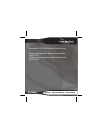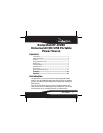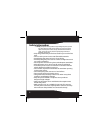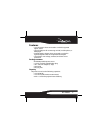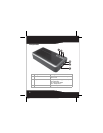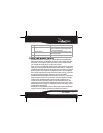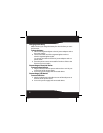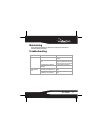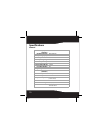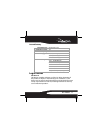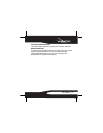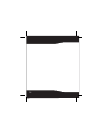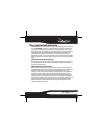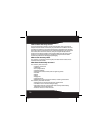
7
RF-INV80
Using the power source
Most electrical tools, appliances, and AV devices have labels that
indicate the power consumption in amps or watts. Make sure that
the power consumption of the device you want to operate does
not exceed the rated power of the power supply.
If you are not sure what the device’s power consumption is, you can
safely try to operate the device from the power source. The built-in
overload protection shuts down the power source if the connected
device’s power consumption exceeds the power source’s capacity.
If the overload protection shuts down the power source, you need
to unplug the device before the power source will restart.
Resistive loads are the easiest for the power source to run. However,
larger resistive loads, such as electronic stoves or heaters, usually
require more wattage than the power supply can deliver on a
continuous basis. Inductive loads, such as some televisions, may
require two to six times their wattage rating to start up. The most
demanding in this category are those that start under load, such as
compressors and pumps.
Testing is the only definitive way to determine whether the power
supply can start a device and how long the device will run.
4 USB ports Plug USB devices, such as mobile phones or MP3
players, into these ports. The power supply charges
the connected device’s battery.
5 Ventilation opening Helps cool the power supply. Do not block or insert
objects into this opening.
6 110 V AC power connector Plug an electrical device into this connector.
# Component Description



